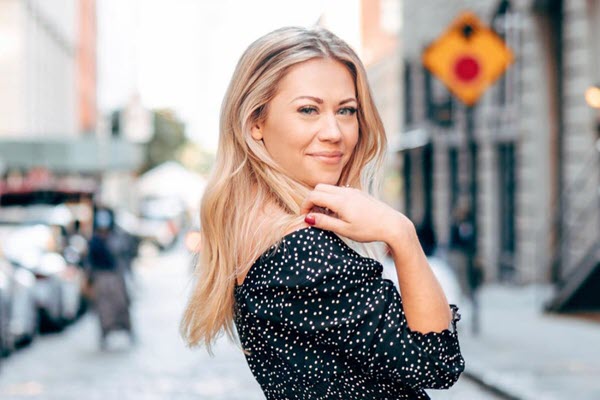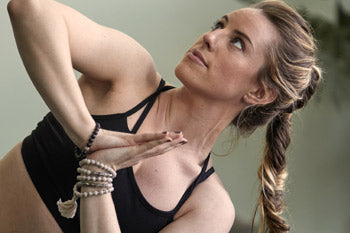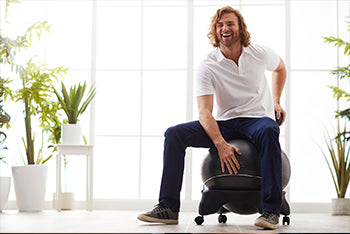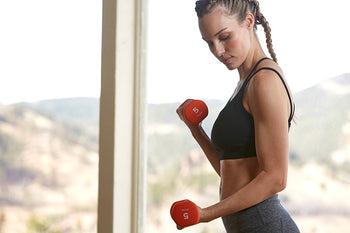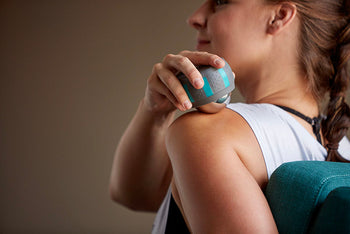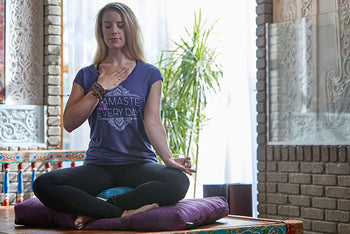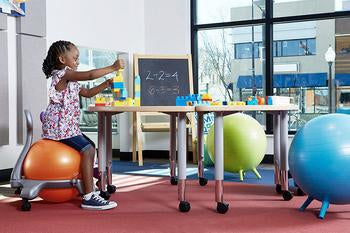Ladies, Learn to Love Your Yoga

by: Kim Fuller
A yoga practice can provide women with both obvious and unexpected benefits for the body, mind and spirit. International yoga expert Colleen Saidman says yoga “offers women solace, reflection, joy, acceptance and ease in their bodies.”
Colleen began her yoga practice in 1994. She had first tried it in the late ‘80s, but she says she was too focused on her athletics to give it much attention. Once a runner, boxer and professional model, Colleen initially began yoga as a physical outlet after a back injury, but it began transforming every realm of her life.
“I was so used to running, literally and figuratively,” Colleen says. “And yoga sort of made me sit and be with whatever was coming up at that moment.”
Yoga can help women find physical and emotional balance, as well as self-acceptance. Colleen emphasizes how yoga works every part of the body, offering movement in every direction along with stimulation of the organs, muscles and bones.
“It really offers me solace, a place to go in and just to be,” she says. “And it physically balances the body. It gives you literal balance, but it also brings balance into life and gives you perspective.”
Colleen says yoga helps you connect with your inner radiance. She describes how you can step into a yoga class and just be yourself, listen to your breath and appreciate what your body is capable of.
A practice for all ages
Yoga can be a part of anyone’s life, during any time, Colleen emphasizes, and that at any age, in any condition, yoga meets and supports you exactly where you are.
Colleen says her teenage daughter always wants to do inversions and backbend poses. She says women in their 20s are often drawn to do a hardcore and sweaty Vinyasa flow practice, while women who have been doing yoga for decades may find the need for days with rigorous work, as well as days for restorative poses. The practice evolves and becomes more complete as you get older and become a little wiser and more intuitive.
“As I move into my 50s, the practice can move with me,” Colleen says. “I don’t have to abandon anything. It’s like an all-encompassing art form, and it does help with every stage of life. It’s like a friend.”
Find support from others
Yoga also offers a strong sense of community.
“In yoga, the community, or sangha, is very different from other communities. When you’re in a class, you’re stripping away layer after layer, and so is everyone else in the room,” Colleen says. “There’s a collective support of where you are and in honoring where you are.”
She says that with all the pressures of daily living, it’s important that women support other women, rather than compete with one another.
Empowering poses for women
Colleen suggests some poses that can be specifically beneficial to women in strengthening their physical and emotional body:
Standing poses, such as the Warrior poses, Virabhadrasana I, II and III, as well as Tree Pose, Vrksasana, can help women find emotional and physical strength. Colleen recommends restorative heart-openers, such as Fish Pose, Matsyasana, or Camel Pose, Ustrasana, to find openness and compassion, and lying postures, such as Corpse Pose, Savasana, and Child’s Pose, Balasana, for a sense of grounding and ease.
Premenstrual Syndrome (PMS) pose sequence
PMS is usually a strain on the nervous system causing irritability, bloating, headaches and heaviness in the pelvic region. Here is a short sequence that Colleen suggests to help with PMS symptoms every month:
- Supported Reclining Bound Angle Pose, supta baddha konasana, with a bolster for extra support, for five to 10 minutes.
- Reclining Big Toe Pose, supta padangusthasana. Open leg out to the side and place it on a bolster, for one to two minutes each leg.
- Downward-Facing Dog, adho mukha svanasana (with support under head, if you have headache), for up to one minute.
- Headstand, salamba sirsasana, with support from a wall if necessary, for up to five minutes.
- Shoulderstand, salamba sarvangasana, with blankets under shoulders, for up to five minutes.
- Seated Wide-Legged Straddle Pose, upavistha konasana, with bolster, block or rolled up blankets, for two to five minutes.
- Bridge Pose, setu bandha sarvangasana, with a block under the sacrum at low or medium height (you can also put the feet on a block and straighten the legs), for 30 seconds.
- Corpse Pose, savasana, for five to 10 minutes.
Menopause pose sequence
This is the sequence that Colleen suggests to help cope with symptoms of menopause:
- Bound Angle Pose, baddha konasana, sitting on a blanket and pumping the legs, for two to five minutes.
- Seated Wide-Legged Straddle Pose, upavistha konasana, sitting on a blanket pumping the legs while feeling the lift and support of pelvic floor, for two to five minutes.
- Wide-Legged Forward Bend, prasarita padottanasana, with head on block. Keep the pumping theme, for two to five minutes.
- Downward-Facing Dog, adho mukha svanasana, with head on block, for up to one minute.
- Head-to-Knee Forward Bend, janu sirsasana, for up to one minute.
- Shoulder Stand, salamba sarvangasana, with blankets under shoulders, for up to five minutes.
- Bridge Pose, setu bandha sarvangasana, with a block under the sacrum at low or medium height (you can also put the feet on a block and straighten the legs), for 30 seconds.
- Supported Reclining Bound Angle Pose, supta baddha konasana, with bolster and blanket for head, legs strapped and knees supported with blocks, for two to five minutes.
- Legs Up the Wall Pose, viparita karani, and also bring the legs into baddha konasana there, for two to five minutes.
- Corpse Pose, savasana, five to 10 minutes.
Colleen also highly recommends inversions and standing poses during menopause to increase circulation and prevent bone loss.
“For menopause, the symptoms are different every day,” Colleen says. “Some days you sleep well and you get up and you really want to move. Some days you’ve had hot flashes all night and you’re exhausted and you want to do a restorative practice.”
Connect to your body
Colleen often finds women who tell her they have never connected with their bodies, either because they were never very physically active, or they were scared of their bodies and never accepted themselves.
“Some women say they never really wanted to admit they had a body and they never used it,” she says. “Suddenly, yoga has given them that. It’s opened up a new world for women who have never been in their bodies or have never even exercised.”
Women at every age can appreciate the beauty in their bodies that allows them to move, breathe and live. Colleen says that yoga can help you appreciate the miracle of the human body, shed negative habits and truly love yourself.
“My advice is just to love your body,” she says. “I think that women think that there’s something they should be that they’re not. Just appreciate where you are and relish in it.”
Also in Blog
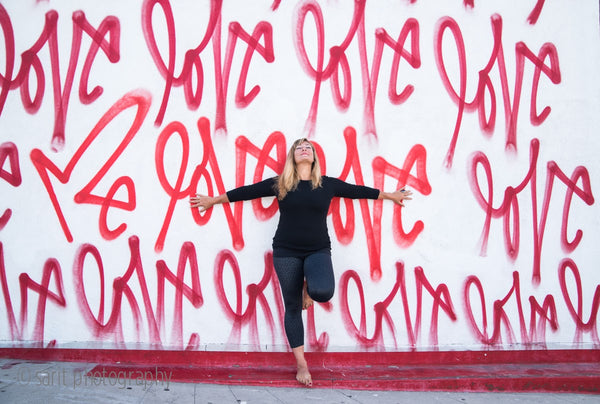
Body Peace & Personal Empowerment
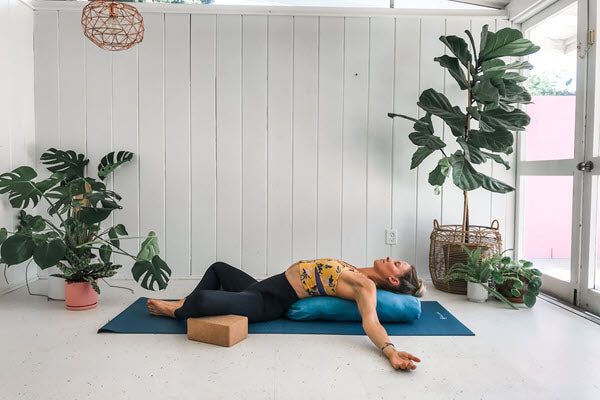
Yoga for Swimmers: Poses for Strength and Mobility
